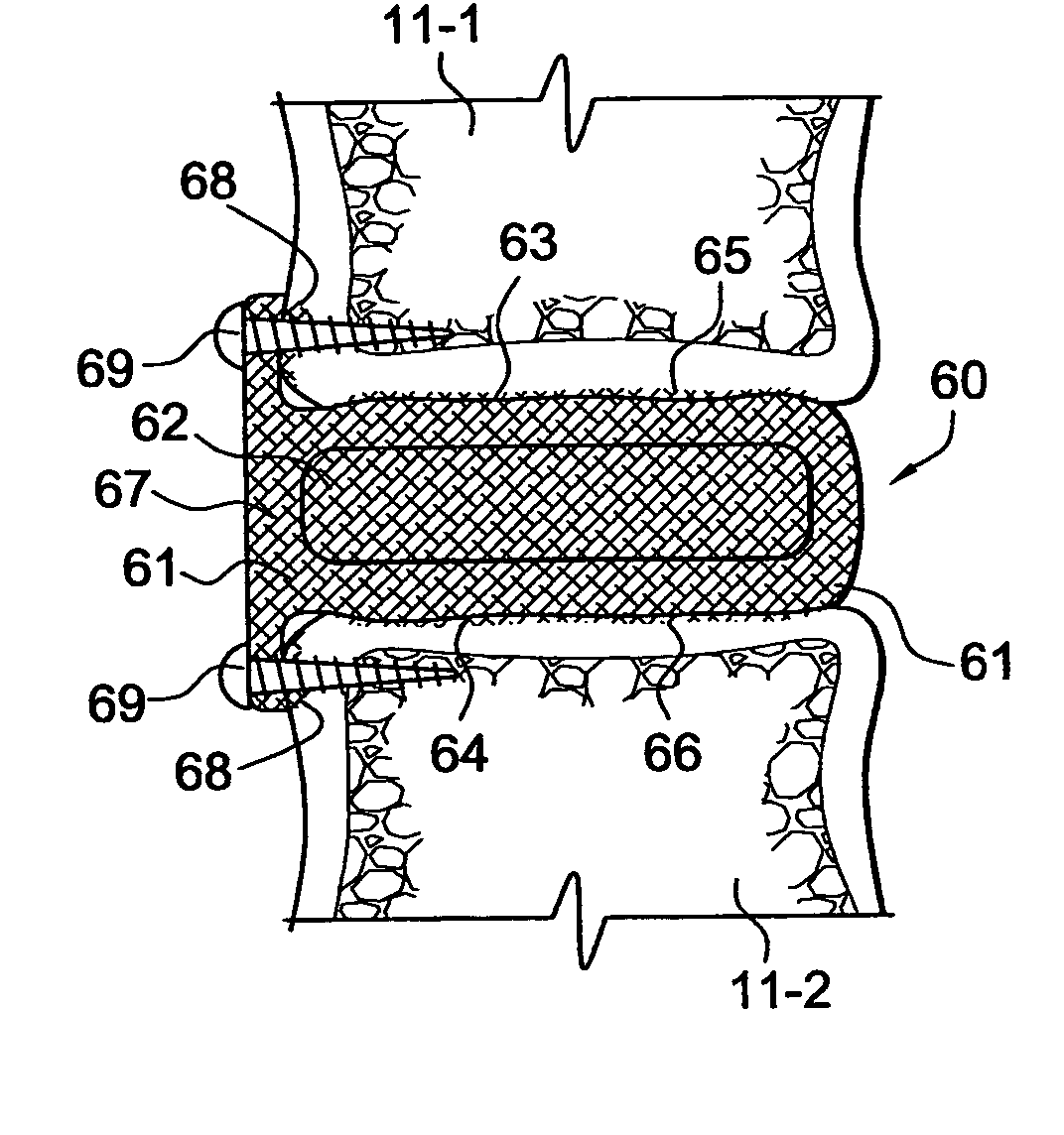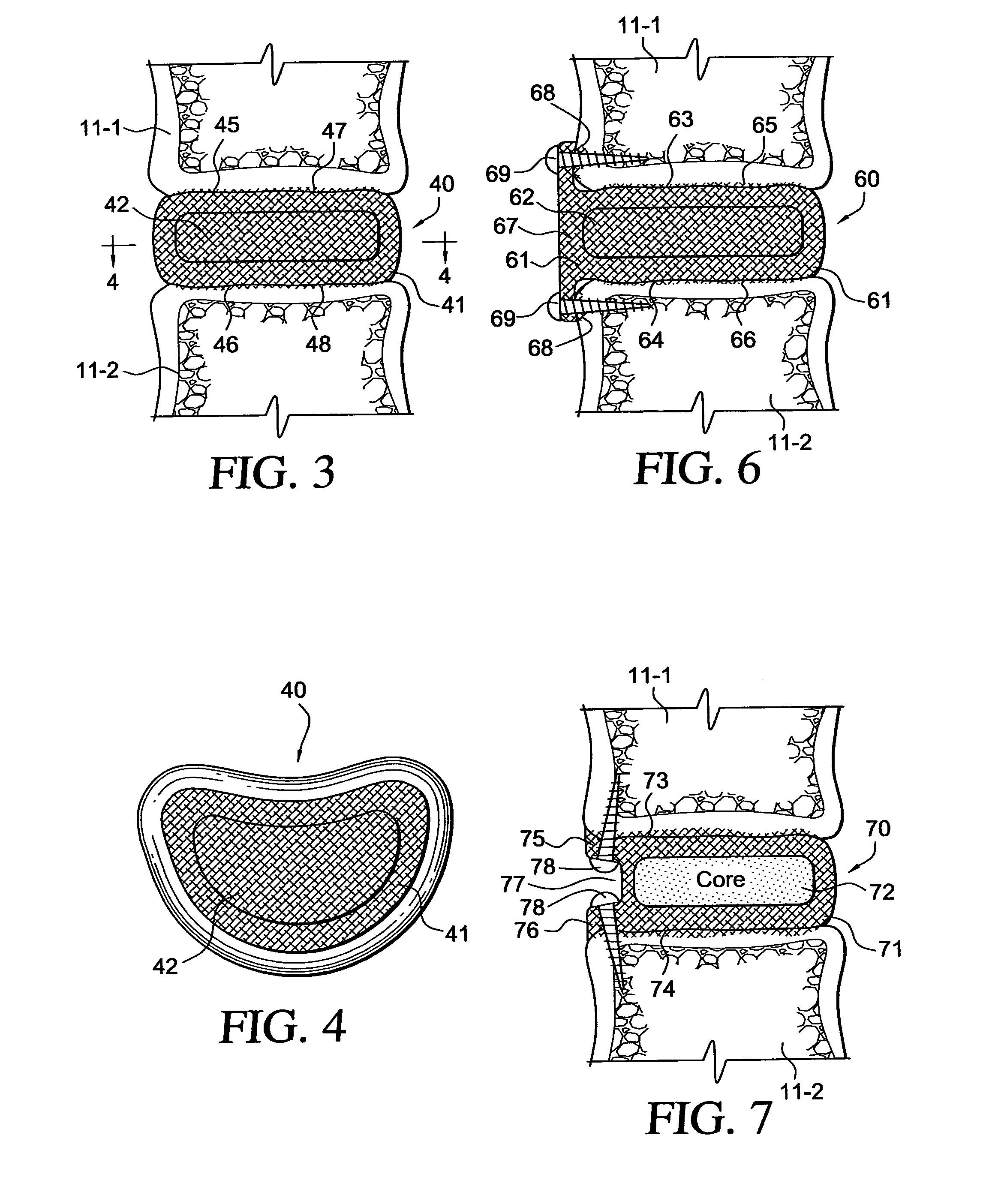Intervertebral disc replacement
a technology for intervertebral discs and prostheses, which is applied in the direction of prosthesis, osteosynthesis devices, ligaments, etc., can solve the problems of disc deterioration, thinning, and loss of firmness in the central region, and achieves the effects of preventing excessive rotation and subluxation of the vertebrae, stabilizing the spine, and achieving desirable deformation
- Summary
- Abstract
- Description
- Claims
- Application Information
AI Technical Summary
Benefits of technology
Problems solved by technology
Method used
Image
Examples
Embodiment Construction
[0047] Referring to FIGS. 3 and 4, a presently preferred embodiment is a unified composite disc prosthesis 40, shown as being positioned following implantation between the bodies of two vertebrae 11-1 and 11-2 of the vertebral column, as viewed anteriorly (FIG. 3). Prosthesis 40 includes a matrix 41 with a substrate of bioincorporable continuous fabric. In its central region, the substrate is impregnated with a liquid or semi-liquid polymer—preferably a hydrogel polymer—that intermixes with the substrate fabric in that region to form a nuclear core (nucleus) 42. This core is a hybrid composite of the two materials, a central mix of polymer and fabric that is elastically deformable and accurately mimics the nucleus pulposus of a native or natural disc.
[0048] The polymer is preferably an injectable, curable liquid that, after injection into the central region of the substrate, sets to form a viscoelastic solid. Alternatively, the liquid may be soaked into the fabric at the central re...
PUM
| Property | Measurement | Unit |
|---|---|---|
| elastic deformation | aaaaa | aaaaa |
| compressive force | aaaaa | aaaaa |
| flexibility | aaaaa | aaaaa |
Abstract
Description
Claims
Application Information
 Login to View More
Login to View More - R&D
- Intellectual Property
- Life Sciences
- Materials
- Tech Scout
- Unparalleled Data Quality
- Higher Quality Content
- 60% Fewer Hallucinations
Browse by: Latest US Patents, China's latest patents, Technical Efficacy Thesaurus, Application Domain, Technology Topic, Popular Technical Reports.
© 2025 PatSnap. All rights reserved.Legal|Privacy policy|Modern Slavery Act Transparency Statement|Sitemap|About US| Contact US: help@patsnap.com



